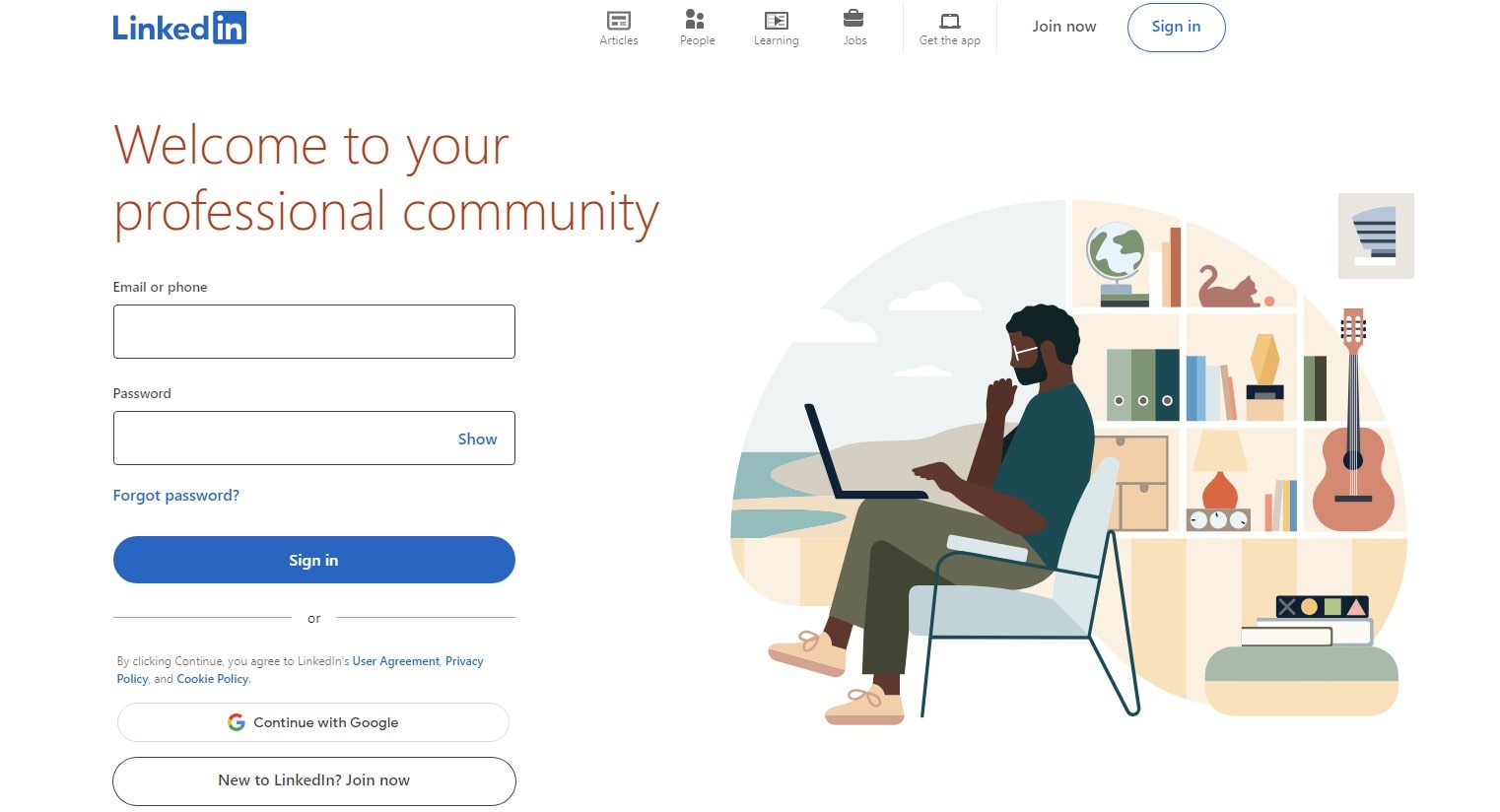Dive into the vibrant world of a digital ecosystem, where every click, swipe, and interaction weaves into a dynamic tapestry of digital connections. This digital ecosystem, an intricate network of technologies and platforms, stands as a testament to innovation and collaboration in the digital age. It’s not just a buzzword—it’s the backbone of our digital reality, powering up businesses and communities alike.
Key Highlights of a Digital Ecosystem:
- Seamless interplay of diverse digital platforms
- Synchronized digital tools enhancing user experiences
- Dynamic adaptation to emerging digital trends

In this ever-evolving digital ecosystem, Plerdy’s tool emerges as a game-changer. It’s your go-to for drilling down into user behavior, offering insights that fuel strategies for enhanced Conversion Rate Optimization (CRO) and User Experience (UX). With Plerdy, unlock the potential to:
- Elevate conversion rates with precision
- Refine website usability, creating compelling digital journeys
- Harness the power of A/B testing for impactful decision-making
- Analyze SEO data for optimized digital presence
Embrace the digital ecosystem —your pathway to thriving in a world where digital is not just a medium, but a catalyst for growth and innovation. Let Plerdy guide you through this journey, unlocking the full potential of your digital endeavors.
Defining a Digital Ecosystem
A digital ecosystem is a dynamic environment that connects various digital entities – businesses, people, and platforms – facilitating seamless interaction and value exchange. This interconnected web thrives on the integration of technology, information, and processes. Consider these key components:
- Integrated Platforms: Think of platforms like Amazon and Google – they seamlessly merge various digital services, creating a cohesive user experience.
- User Engagement: This is where the magic happens. Apple’s digital ecosystem, for instance, ensures users stay engaged by offering complementary products and services, from the iPhone to the iCloud.
- Data Flow: Continuous and smooth data movement across different touchpoints is a hallmark. Spotify’s recommendations, for example, are shaped by data flowing within its digital ecosystem.
The beauty of a digital ecosystem is its adaptability and scalability. It’s not just about tech; it’s about creating value, fostering innovation, and cultivating growth. For businesses navigating the digital landscape, understanding the nuances of their ecosystem is crucial. It’s not just about being online – it’s about thriving in a digital ecosystem where every touchpoint matters, every connection counts, and every interaction can lead to exponential growth. Dive into the digital ecosystem, embrace its intricacies, and harness its power for unparalleled success.
A Glimpse into the Digital Ecosystem Landscape

In today’s ever-evolving landscape, the term “digital ecosystem” stands out as a powerful force driving innovation, collaboration, and growth. It refers to a cohesive network of digital platforms, tools, and users – all interacting, sharing, and building value collectively. This ecosystem represents an intricate tapestry of interconnected digital elements, weaving together a story of unprecedented advancements and possibilities.
Consider these cornerstones of a thriving digital ecosystem:
- Interconnected Platforms: Businesses like Airbnb and Uber seamlessly connect users and providers, demonstrating the strength of a well-orchestrated digital ecosystem
- Value Creation: The essence of the digital ecosystem lies in its ability to create unmatched value. Think of how streaming services such as Netflix transformed entertainment by leveraging this ecosystem’s potential.
- Adaptability and Evolution: Digital ecosystems aren’t static. They evolve, adapting to user needs and technological advancements. For instance, e-commerce platforms have grown to include AR-based virtual try-ons, reflecting the evolving nature of the digital realm.
The significance of the digital ecosystem in today’s age is monumental. It doesn’t merely signify a shift to online platforms – it embodies a transformative approach to how businesses operate, consumers engage, and innovation blossoms. Dive deep into this ecosystem, embrace its multifaceted layers, and harness the myriad opportunities it unfurls in the digital age.
Historical Evolution
The transformation of the digital ecosystem has been nothing short of spectacular. In the early days, computer networking aimed to merely connect devices, letting them communicate on rudimentary levels. Fast-forward a few decades, and we’ve transitioned to sophisticated digital platforms, driving global interactions and reshaping industries.
- Modest Beginnings: The 1960s brought ARPANET, a foundational block in networking. This precursor to the internet aimed to link research institutions, marking the birth of interconnected digital spaces.
- Rise of the Web: The 1990s saw the blossoming of the World Wide Web. This leap spurred on the creation of websites, offering diverse content, from information hubs to early e-commerce platforms.
- The Social Surge: The 2000s ushered in a wave of social media platforms. These sites, harnessing the power of the digital ecosystem, not only connected friends but also brands with consumers, influencers with followers, and creators with vast audiences.
- Today’s Pinnacle: Currently, we’re immersed in multi-layered digital ecosystems. These encompass everything from AI-driven platforms, fintech innovations, to immersive virtual spaces catering to niche communities.
This evolutionary journey underscores the transformative power of technology. With every innovation, our digital ecosystem has become richer, more interactive, and undeniably indispensable. It serves as a testament to human ingenuity and our relentless drive to push digital boundaries further. In these ecosystems, possibilities have expanded, paving the way for future advancements we can only begin to imagine.
Characteristics of a Digital Ecosystem
A digital ecosystem encapsulates a rich tapestry of interconnected entities, each playing a pivotal role in creating a robust and dynamic environment. Diving into its core, we uncover several characteristics that set it apart, ensuring that it thrives in the cutthroat digital landscape:
- Scalability: Digital ecosystems are built to grow. Platforms like YouTube demonstrate this, expanding from simple video sharing to an entire universe of creators, advertisers, and viewers.
- Interoperability: Within a digital ecosystem, various tools and platforms effortlessly mesh together. Take the Apple ecosystem – devices, apps, and services work in harmony, offering a seamless user experience.
- Adaptive Natur: Digital ecosystems aren’t set in stone. They shift, change, and adapt to emerging technologies and evolving user preferences. Spotify, initially a music streaming service, branched out into podcasts, tapping into changing consumption patterns.
- User-Centric Approach: At the heart of any digital ecosystem lies the user. Platforms like Amazon have championed this, tweaking and refining their services based on user feedback and behavior.
- Data-Driven Decision Making: Data acts as the lifeblood of the digital ecosystem. By analyzing data trails, platforms like Netflix curate content, enhancing user engagement and satisfaction.
In essence, a digital ecosystem is more than a buzzword; it embodies a holistic approach to digital interaction, engagement, and growth. By understanding its characteristics, businesses can better navigate the digital seascape, harnessing waves of opportunity and innovation.
Types of Digital Ecosystems

The digital age has ushered in a myriad of ecosystems, each designed to serve specific purposes and cater to unique audiences. While the digital universe is vast, these ecosystems often have distinguishable attributes that set them apart. Let’s journey through the diverse types of digital ecosystems:
- Business Ecosystems: Platforms such as LinkedIn exemplify this, fostering connections between professionals, corporations, and recruiters. Here, commerce, collaboration, and communication coalesce.
- Consumer-Centric Ecosystems: Think of Amazon, where consumers dive into a sea of products, reviews, and personalized recommendations. This ecosystem thrives on user engagement, feedback, and consumer-brand interactions.
- Technological Ecosystems: GitHub stands out in this category. Developers, coders, and tech enthusiasts collaborate, sharing code and building on each other’s innovations.
- Content Creation Ecosystems: YouTube takes the cake here, birthing a space where creators, viewers, and advertisers converge, feeding off each other’s creativity and feedback.
- Social Media Ecosystems: Platforms like Instagram weave this digital tapestry, where sharing, liking, and commenting are the norm. Users connect, businesses market, and influencers flourish.
While each digital ecosystem possesses its unique flavor and function, a common thread binds them— the unyielding power of digital connectivity. These ecosystems don’t merely exist; they pulsate with life, drive engagement, and redefine the boundaries of what’s possible in the digital domain. As we move forward, it’s paramount to recognize and tap into the potential of these diverse digital ecosystems. They’re not just platforms; they’re dynamic worlds unto themselves.
Benefits of Digital Ecosystems
Digital ecosystems have emerged as driving forces, transforming the landscape of business, technology, and consumer engagement. Harnessing the capabilities of these ecosystems offers a myriad of benefits:
- Enhanced Connectivity: Digital ecosystems, such as Slack, knit teams together, ensuring seamless communication and project management across the board.
- Scalable Growth: Platforms like Shopify exemplify this, allowing businesses to start small and scale up, adjusting digital tools and services as they expand.
- Data-Driven Insights: With ecosystems like Google Analytics, companies get a front-row seat to user behavior, enabling them to tailor strategies that resonate.
- Unified User Experience: Apple’s suite of products, from iPhones to MacBooks, offers users an integrated experience, making transitions and data sharing effortless.
- Innovation at Its Best: Digital ecosystems act as hotbeds for creativity. Take Adobe Creative Cloud – it brings together a plethora of tools, spurring designers and artists to push boundaries.
The brilliance of digital ecosystems lies in their adaptability and holistic approach. They don’t merely facilitate tasks; they reimagine processes, driving efficiency, enhancing user engagement, and catalyzing innovation. Leveraging these ecosystems becomes vital as we enter the digital age. Businesses, individuals, and innovators alike can harness the multifaceted benefits, setting the stage for unprecedented growth and success in the digital space.
Challenges and Limitations
Digital ecosystems have paved the way for streamlined processes, enhanced user experiences, and game-changing innovations. But as they evolve, several hurdles pop up, requiring immediate attention:
- Interoperability Issues: Many digital platforms promise integration but often end up with compatibility issues. For instance, e-commerce ecosystems sometimes face hiccups when syncing with third-party payment gateways.
- Data Privacy Concerns: As data becomes the fuel driving these ecosystems, safeguarding user information turns paramount. Platforms like Facebook have come under scrutiny due to lapses in user data protection.
- Complexity in Navigation: Overly intricate digital ecosystems can confuse users, leading them to abandon the platform. This complexity stands out particularly in multi-feature apps that try to cram in too many services.
- Scalability Struggles: As businesses grow, so should their digital ecosystems. Yet, some platforms, such as early-stage startup tools, may not keep up with scaling demands, leading to operational disruptions.
- Over-reliance: Putting all eggs in one digital basket can backfire. When a single platform manages every aspect of a business, any downtime or glitch can bring operations to a standstill.
In niches like fintech or health-tech, these challenges can drastically affect user trust and overall functionality. Addressing these limitations involves a combination of user feedback, tech advancements, and foresight to anticipate potential pitfalls. By recognizing and acting on these challenges, digital ecosystems can continue their trajectory of transforming industries and user experiences.
Key Players in Digital Ecosystems: Shaping Tomorrow’s Landscape

When we delve into the digital ecosystem, several names stand out as trailblazers, setting benchmarks with their cutting-edge platforms and innovative technologies. These juggernauts are not just surviving the digital revolution; they’re crafting it.
- Google: Dominating the search engine niche, Google expands its digital footprint with ventures like Android OS and Google Cloud. Their ecosystem is vast, catering to both individual users and mega-corporations.
- Amazon: Originally an online bookstore, Amazon has morphed into a digital behemoth. With services like AWS and Prime, it has anchored itself firmly in the e-commerce and cloud computing sectors.
- Apple: By integrating hardware, software, and services, Apple’s ecosystem remains unparalleled. From the iPhone to the App Store, Apple’s products seamlessly weave together, creating a user-centric digital experience.
- Microsoft: Stepping up from its Windows legacy, Microsoft now shines in the digital ecosystem with platforms such as Azure and collaborations like LinkedIn.
- Facebook (Meta Platforms): Beyond just social networking, Facebook’s acquisitions – Instagram, WhatsApp, and Oculus VR – demonstrate its ambition to carve out vast digital territories.
- Salesforce: As businesses digitize, Salesforce offers CRM solutions that redefine customer relationship management in the digital age.
From e-commerce to social networking, from cloud computing to augmented reality – these pioneers are redefining how we perceive and engage with the digital ecosystem. Their continuous innovation pushes boundaries, ensuring the digital ecosystem remains vibrant, diverse, and ever-evolving.
The Role of Data in a Digital Ecosystem
In the pulsating heart of the digital ecosystem, data acts as the lifeblood, directing the ebb and flow of functionality and innovation. Understanding data’s indispensable role can unlock unparalleled value in these interconnected digital spaces.
- Tailored User Experiences: Platforms like Spotify and Netflix tap into vast data reservoirs, carving out personalized content recommendations. Their success stems from understanding user preferences, ensuring their digital journey is both engaging and memorable.
- Informed Decision Making: Businesses leverage data analytics to zero in on market trends. By filtering out noise, companies like Amazon can optimize their inventory, sidestep overstock issues, and pinpoint emerging consumer demands.
- Revolutionizing Marketing Strategies: Platforms harness user data to refine advertising campaigns. Facebook, for instance, ensures ads resonate with target demographics, boosting both visibility and conversion rates.
- Enhancing Product Development: Feedback loops in the digital ecosystem allow rapid iteration. Apple, with its beta testing programs, gathers user insights, refines its software, and rolls out polished products.
- Augmented Operational Efficiency: By plugging into real-time data streams, logistics giants like UPS steer clear of traffic bottlenecks, trim down fuel costs, and promise timely deliveries.
As data continues to shape the contours of the digital ecosystem, it promises a future brimming with intuitive interfaces, market-responsive products, and dynamic digital landscapes. Embracing the data-driven ethos isn’t just a trend – it’s the roadmap to navigating the complexities of the digital age.
Future of Digital Ecosystems
As the digital revolution accelerates, ecosystems evolve at breakneck speeds, setting stages for transformations that were once pure fantasy. The horizons of digital ecosystems shimmer with possibilities, and to stay relevant, businesses and platforms must embrace the winds of change.
- Immersive Experiences with AR and VR: Industries from real estate to retail tap into augmented and virtual reality. Imagine touring a home in Bali while sitting in Boston, or trying on outfits virtually before making a purchase.
- Decentralized Systems and Blockchain: This technology doesn’t just back cryptocurrencies. Companies are starting to leverage blockchain to bolster transparency, trust, and tamper-proof transactions within the digital ecosystem.
- AI-Powered Personalization: Digital interfaces will move beyond one-size-fits-all. Advanced AI algorithms will tailor content, products, and experiences to individual preferences, drawing users deeper into the digital embrace.
- Green Digital Footprint: As sustainability takes center stage, digital ecosystems will pivot to energy-efficient data centers and eco-friendly algorithms, reducing the carbon footprint of our online adventures.
- Ubiquitous Connectivity with 6G: Yes, even before 5G has fully unfurled its wings, whispers of 6G promise unparalleled data speeds and omnipresent connectivity, bridging the last mile even in the remotest corners.
To harness the promise of tomorrow’s digital ecosystems, companies must break away from traditional molds, fearlessly explore innovations, and, most importantly, listen to the digital heartbeat of their users. By doing so, they won’t just survive but thrive, setting benchmarks for the next chapter in the saga of digital evolution.
Building and Sustaining a Digital Ecosystem
In today’s dynamic landscape, a robust digital ecosystem isn’t just a luxury—it’s a necessity. Creating a thriving ecosystem demands a vision, but sustaining it requires consistency, adaptability, and a user-first approach. Here’s a guide to navigate the digital journey:
- Lay Strong Foundations: Start by defining clear objectives. Whether it’s a platform geared towards e-commerce or a niche community for pet enthusiasts, clarity will guide the design and functionality of your digital space.
- Prioritize User Experience (UX): A seamless UX can make or break your ecosystem. Think intuitive designs, quick load times, and interactive features that pull users in, compelling them to stay and engage.
- Data-Driven Decision Making: Harness analytics to understand user behaviors. This insight steers refinements, ensuring your ecosystem remains attuned to changing preferences and trends.
- Invest in Security: With cyber threats ramping up, protect your ecosystem. Regular updates, state-of-the-art encryption, and stringent access controls will shield your digital assets and users.
- Foster a Community: Encourage interactions, collaborations, and feedback. When users feel a sense of belonging, they become ambassadors, amplifying the reach and reputation of your ecosystem.
The digital realm offers vast opportunities, but it’s those who continually adapt and innovate that reap the rewards. Dive into the ecosystem journey with passion, resilience, and a keen eye for detail, and you’ll carve out a digital space that not only stands out but stands the test of time.
Conclusion
As we wrap up our exploration into the digital ecosystem, it’s clear that this concept isn’t just a fleeting trend—it’s a cornerstone of our modern world. Startups, IT giants, social media platforms, and digital marketing tools all play a role in the digital ecosystem, which is always evolving. It’s a space where innovation is not just encouraged but expected, where digital strategies and ecosystems intertwine to create a tapestry of technological advancement.
The digital ecosystem thrives on these key elements:
- Continuous adaptation to evolving digital trends
- Integration of diverse digital platforms and tools
- Collaboration across various digital channels and parties
In the heart of this digital ecosystem, Plerdy’s tool stands out, offering robust SEO & UX analysis capabilities. This tool is not just an addition but a necessity for anyone aiming to navigate the complex waters of the digital ecosystem successfully. Plerdy helps you to:
- Keep track of evolving user behaviors
- Optimize digital strategies for maximum impact
- Stay ahead in the fast-paced digital marketplace
As this year unfolds, the digital ecosystem continues to grow and evolve, bringing new challenges and opportunities. Whether you’re a pro or a beginner, you must stay current. Visit Plerdy’s blog, tap into their resources, and leverage their tools to ensure your place in the ever-expanding digital ecosystem. Remember, in this digital age, staying static is not an option—keep moving, keep innovating, keep growing.
